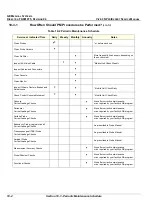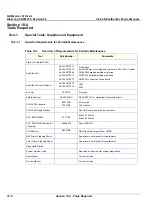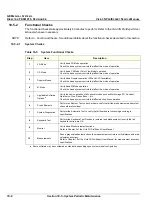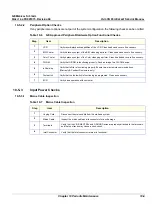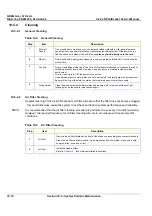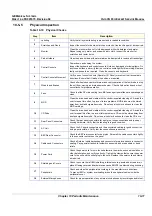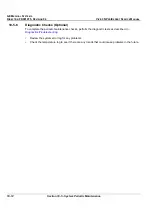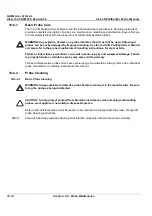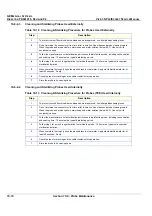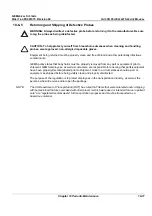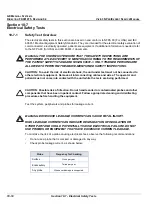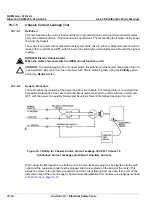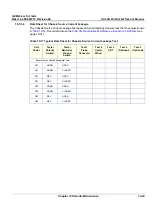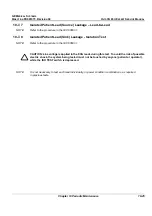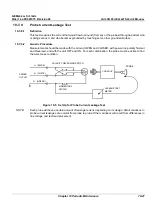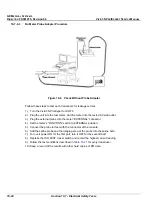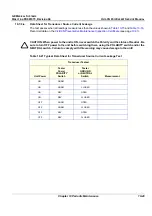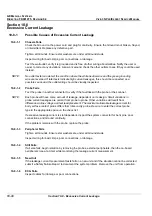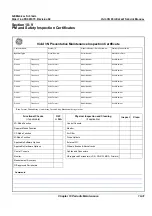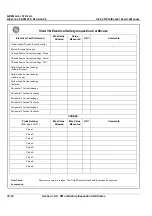
GE M
EDICAL
S
YSTEMS
D
IRECTION
FK091075, R
EVISION
04
V
IVID
3N P
RO
/E
XPERT
S
ERVICE
M
ANUAL
10-18
Section 10-7 - Electrical Safety Tests
Section 10-7
Electrical Safety Tests
10-7-1
Safety Test Overview
The electrical safety tests in this section are based on and conform to NFPA 99 (For USA) and IEC
60601-1 Medical Equipment Safety Standards. They are intended for the electrical safety evaluation of
cord-connected, electrically operated, patient care equipment. If additional information is needed, refer
to the NFPA 99 (for USA) and IEC 60601-1 documents.
WARNING:
THE USER MUST ENSURE THAT THE SAFETY INSPECTIONS ARE
PERFORMED AT LEAST EVERY 12 MONTHS ACCORDING TO THE REQUIREMENTS OF
THE PATIENT SAFETY STANDARD IEC-EN 60601-1. ONLY TRAINED PERSONS ARE
ALLOWED TO PERFORM THE ABOVE-MENTIONED SAFETY INSPECTIONS.
CAUTION: To avoid the risk of electrical shock, the unit under test must not be connected to
other electrical equipment. Remove all interconnecting cables and wires. The operator and
patient must not come into contact with the unit while the tests are being performed.
CAUTION: Possible risk of infection. Do not handle soiled or contaminated probes and other
components that have been in patient contact. Follow appropriate cleaning and disinfecting
procedures before handling the equipment.
Test the system, peripherals and probes for leakage current.
WARNING:
EXCESSIVE LEAKAGE CURRENT CAN CAUSE FATAL INJURY.
HIGH LEAKAGE CURRENT CAN INDICATE DEGRADATION OF INSULATION OR
OTHER PART AND COULD POTENTIALLY CAUSE ELECTRICAL FAILURE. DO NOT
USE PROBES OR EQUIPMENT THAT HAVE EXCESSIVE CURRENT LEAKAGE.
To minimize the risk of a probe causing electrical shock, observe the following recommendations:
•
Do not use a probe that is cracked or damaged in any way
•
Check probe leakage current, as shown below:
Probe
Frequency for Checking
Surface
Once per year
Endocavitary
Twice per year
Any probe
Whenever damage is suspected

